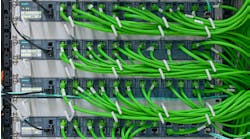That's an encouraging estimate, particularly to those already implementing these initiatives. And, perhaps, it's a little worrisome to those who've lagged in adopting elements of the digital transformation in their business.
We followed up with IDC Manufacturing Insights’ Kimberly Knickle, research vice president, and John Santagate, research manager, to learn more. Take a look…
Smart Industry: What do you find most surprising among the predictions to impact manufacturers' IT investments in 2017?
Kimberly/John: Since we spend so much time analyzing the manufacturing industry, it's hard to call out any of these predictions as "surprising" to us. But when we spend some time modeling the industry adoption of specific technology areas, we're surprised by how slow or fast the adoption is across regions, company sizes, or in particular industry segments. For example, there are many small manufacturers that are more aggressive with digital transformation than you would expect, often because a leader in their value chain is pushing them or they have aSmart Industry: How do you define the phrase "rethinking the future of work"?
Kimberly/John: That means working smarter, alongside technologies that are embedded into the way we work, with embedded intelligence. "Embedded" is a big part of the future of work—technology is integrated, as are the information and insights we need to do our jobs. You can see in our prediction about automated assistance technologies, such as robotics, 3D printing, AI, and AR/VR on the plant floor. But really we see work changing in all aspects of manufacturing operations—in the front office and back office, in the supply chain and the plant, in design and in service.
Smart Industry: What industries / fields are best-positioned to take advantage of digital transformation?
Kimberly/John: We have examples of digital transformation across all of manufacturing, with most of those that are further along motivated by their customers, especially when they are closer to the end consumers. And the greatest challenge is for those companies that have successful traditional businesses and are trying to understand how they adapt to a new, digitally transformed world. This is the Kodak story updated for today's market. There are manufacturers that need to take a new product line or service that makes up less than 5% of their revenue today and grow that side of the business to represent 50% or more of their revenue.
Smart Industry: What is your perspective on how robotics fit into smart industry?
Kimberly/John: I think they play a significant role. Ultimately, robots are intelligent tools. They have a job to do and they do that job without human intervention. We are seeing great progress made around smart collaborative robots that are not only able to work autonomously, but are able to safely work alongside of humans. So there will be two sides here, the traditional robot that is unsafe to work alongside of, but that is equipped with sensors to communicate multi-directionally with the business and other machines. And, the other side, which is smart collaborative robots that integrate into the workforce and operate alongside of humans, but also with the sensors to communicate multi-directionally.
Smart Industry: How is the robotics industry itself taking advantage of digital transformation?
Kimberly/John: The robotics industry is both playing in the digital transformation of industries (like manufacturing and retail) but is also undergoing its own digital transformation. Digital transformation is about leveraging modern digital technology in order to evolve and transform business processes and operating models. We are seeing the robotics industry deliver smart devices that are helping other industries to transform, but we are also seeing robotics manufacturers leverage technology to improve how they develop, make, manage and deliver their robots.
Smart Industry: What is the key takeaway from this report?
Kimberly/John: I hope that manufacturers see themselves in this report, and recognize that they need to create value from their technology investments. Their long-term success depends upon it.




